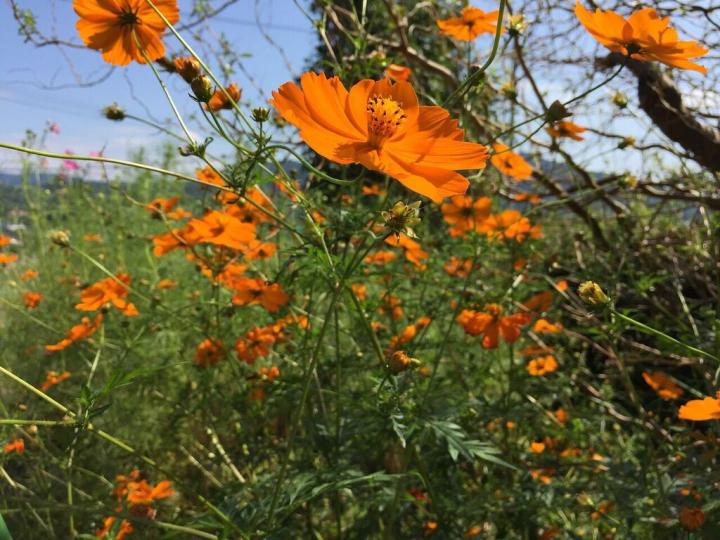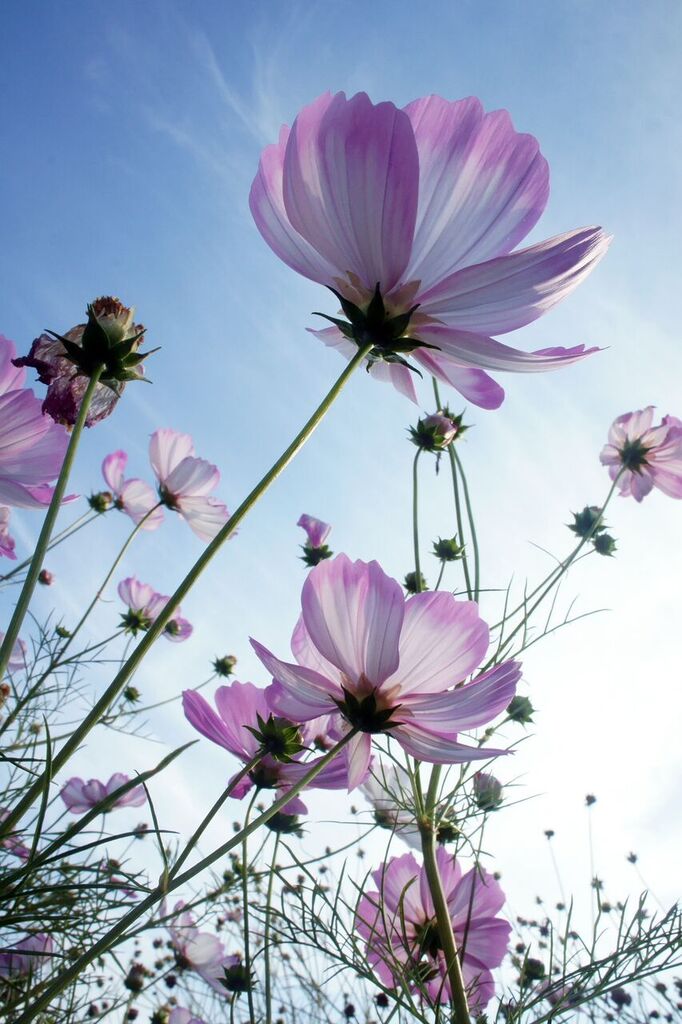Cosmos are annual flowers with colorful, daisy-like flowers that sit atop long, slender stems. Blooming throughout the summer months, they attract birds, bees, and butterflies to your garden. Growing easily from seeds, cosmos even survive in poor soil conditions! Here’s how to grow cosmos.
About Cosmos
Cosmos produce 3- to 5-inch daisy-like flowers in various colors, including pink, orange, red and yellow, white, and maroon. Their flowerheads may be bowl– or open cup–shaped. These beautiful plants can reach 6 feet tall.
Cosmos grow in both beds and containers—and they also make great cut flowers!
Planting
When to Plant Cosmos
- Direct-sow seeds outdoors once the danger of frost has passed.
- Alternatively, sow seeds indoors 4 to 6 weeks before your last spring frost date in trays or pots with a good seed-starting mixture. Move them into 5-inch pots as soon as they’re 3 or 4 inches tall.
- Young plants (transplants) can be planted outdoors once the danger of frost has passed.
Choosing and Preparing a Planting Site
- Cosmos don’t need any special soil preparation. In fact, they like soil that is not too rich, as rich soil will encourage foliage at the expense of blooms.
- Soil should be well-draining.
- Cosmos are tolerant of most soil pH levels, but grow best in neutral to alkaline soils.
- Cosmos can tolerate warm, dry weather very well. They are even drought-tolerant.
- Depending on the variety, cosmos can grow anywhere between 18 to 60 inches tall, so plan accordingly.
How to Plant Cosmos
- Just sow seeds lightly—no more than 1/4-inch deep.
- Thin to 12–18 inches apart when seedlings are a few inches tall.
- If you are growing cosmos from seeds, be mindful that it takes about 7 weeks to first bloom. After that, though, your flowers should continue to bloom until the first fall frost.
- If you let the spiky-brown seed heads blow away during the fall, cosmos are likely to self-sow throughout your garden.

Growing
How to Care for Cosmos
- In order to prolong flowering, you should deadhead the plants (prune off dead/faded flowers). This speeds up flower development and aids branching.
- Because some of these plants can grow really tall, staking may be necessary. Offer them protection from strong winds, encourage balanced branching by pinching out (aka pruning) central shoots or stem tips, or stake them. Growing them against a fence can also provide the necessary support.
- Water regularly until plants are established or if it is unusually dry. Make sure you don’t over-water cosmos; over-watering and over-fertilization can lead to plants with fewer flowers. Cosmos can tolerate dry soil, even in a hot, arid, sunbaked spot.
- Cosmos beds may become weedy due to the fact that they self-seed, so remember to remove flowers before they go to seed or to thin seedlings in the spring.

Pests/Diseases
- Stem canker
- Powdery mildew
- Gray mold
- Aphids
Recommended Varieties
- ‘Picotee’ have pretty white flowers with a crimson border around the edge of the flower (some are also flecked in crimson).
- ‘Sea Shells’ have white, pink, or red tube-shaped petals.
- ‘Purity’ is a beautiful, classic, white flower that looks spectacular growing against the dark-maroon ‘Niger’ hollyhock or purple basil.
- ‘Cosmos Sonata Series’ looks especially good with Bells of Ireland.
- ‘Chocolate’ cosmos adds distinction to a white campanula, dianthus, or ‘Moonshine’ achillea.
- Tall cosmos are best for the back of the garden and filling in mixed borders among perennials such as foxgloves, phlox, delphiniums, and daisies, as well as annuals such as poppies, cleome, and asters.
- Dwarf cosmos, such as the Ladybird series, are great companions for zinnias, Johnny jump-ups, pansies, alchemilla, or dark-blue morning glory.
Harvesting
Harvesting Seeds and Cut Flowers
- To harvest more seeds, remember to leave a few flowers on the plant because they will self-seed.
- You can cut the flowers off anytime after blooming, but it’s best to pick some right when the petals have opened.
- If you cut the blossoms when they first open, they’ll last more than a week in water. Simply strip off the lower leaves and put them in a vase.

Wit and Wisdom
- Cosmos is one of the October birth flowers.
Flowers
Annuals




